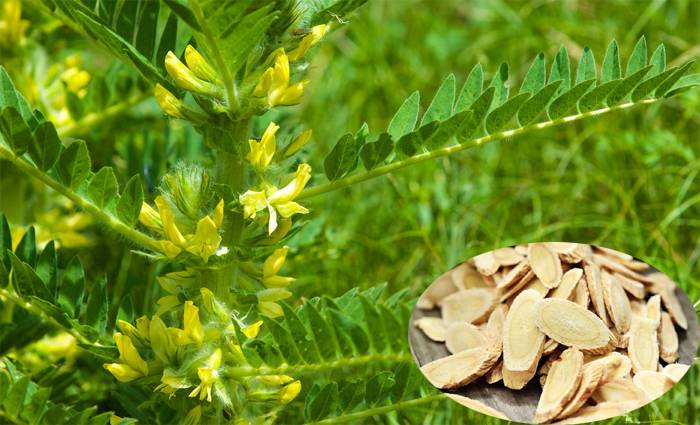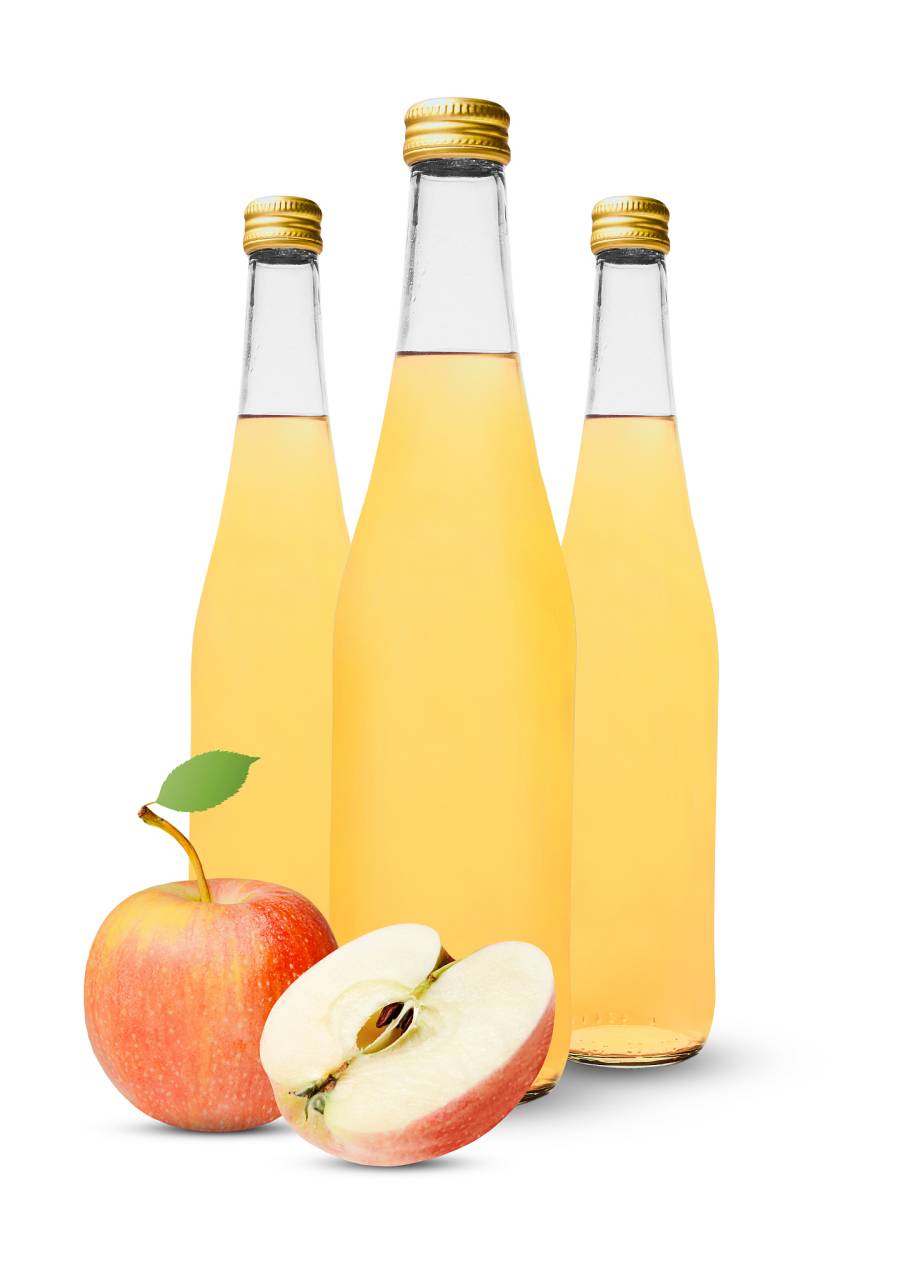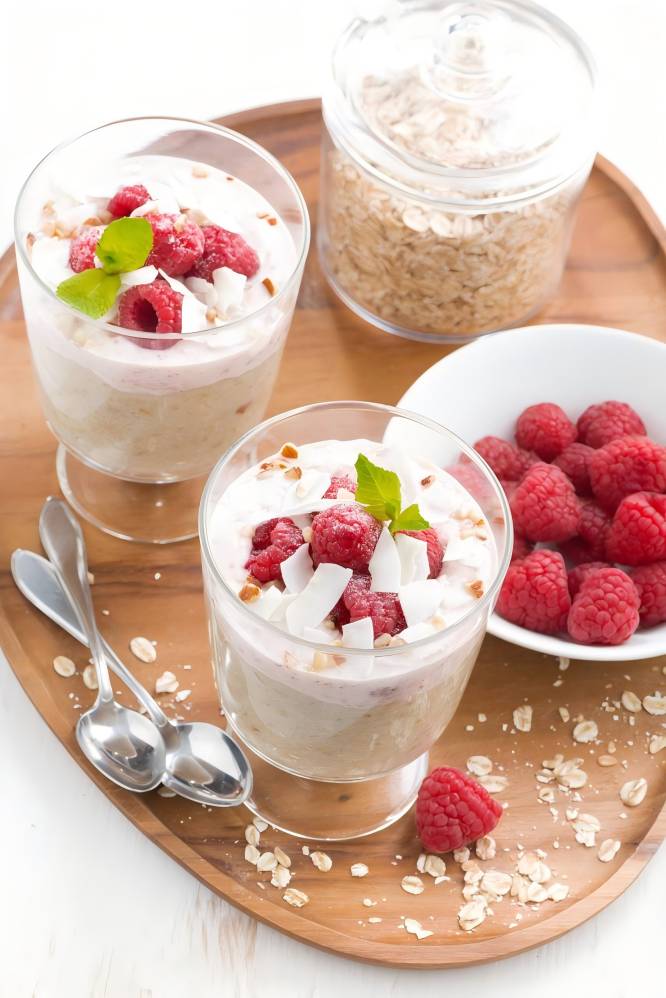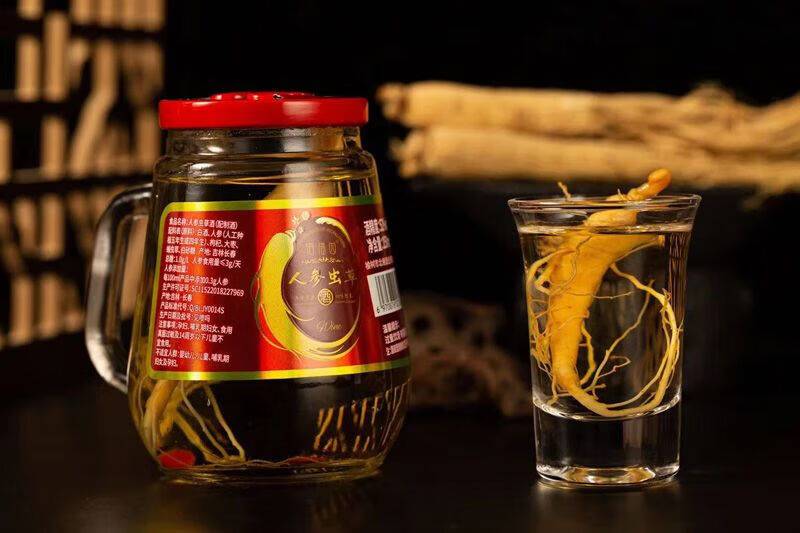astragalus membranaceus根からastragalus多糖類を抽出する方法?
Astragalus, first mentioned in the Divine Husbandman&#名前「黄qi」の下に本草の39の古典は、2000年以上の薬効の歴史を持っており、「最高の気強壮剤」であるという評判を楽しんでいます。これは、国家保健委員会によって発表された薬と食品のデュアルユース種です。astragalus多糖類はastragalusの主要な活性成分の1つです。免疫力の向上、抗菌、抗がん、腸の保護、アンチエイジング、抗ウイルス、心血管系の保護など様々な生理機能を有している[1-2]。また、代謝機能障害に関連する脂肪肝の治療のための天然薬でもあり[3]、近年注目されています。本論文では、抽出法を説明する文献ソーダややアプリケーションの健康多糖类を黄耆には、指導を目的の大規模な産業生産多糖类を黄耆開発を提供する参考にと利用の多糖类を黄耆及び関连商品になった。

1抽出法
開発utilization のastragalusアストラガルスの組織における多糖類の抽出効率と密接に関係している。アストラガルス多糖類の抽出効率を向上させるため、アストラガルス多糖類の抽出方法について多くの研究が行われている。多糖類の抽出には多くの方法がある。一般的に使用されている伝統的な抽出方法には、水抽出とアルコール沈殿法、アルカリ抽出とアルコール沈殿法などがあります。近年、超音波を用いた抽出法、マイクロ波を用いた抽出法、酵素抽出法などの近代的な抽出法も広く用いられており、高い抽出効果があることが実験で確認されている。
1。1 Water-alcohol降水量
従来の水・アルコール沈殿法では、材料を熱湯で抽出または沸騰させて抽出物を得た後、濃縮・沈殿させて抽出物を得る。この方法は安価で安全であり、現在最も一般的に使用されている方法です[4]。しかし、多くの溶媒を消費し、多糖類の純度が相対的に低く、分離・精製の難易度が高くなります。多糖類の収率を向上させるために、多くの研究者が抽出法の研究を行っている。温xiyanら[5]は、乾燥抽出物の収率と多糖類含有量を評価指標として、多糖類抽出の効率に対する液対物質比、抽出時間、抽出回数の影響を調査した。
その結果,抽出回数と時間が多糖類抽出効率に有意な影響を及ぼす一方,液/物質比は統計学的に有意ではなかった。その直交試験の結果によると、この产出量を夸るのエキスliquid-to-materialした際の比重は1:8だった。3回抽出が行われをそれぞれ抽出1.5 h続いた。巧Lijieら。[6]研究対象として天山黄耆の総合分析を通して多糖類抽出過程をを確定し対策表面シングルな因数:液体と材料の比率は1:32で、92°cで3時間抽出した結果、多糖類含有量は予測値に近いことが実証された。
1.2アルカリ抽出とアルコール沈殿
水の抽出やアルコールの沈殿と比較して、製品の高純度と安定性の明らかな利点がありますが、実用的な設備の要件が高く、抽出過程で発生する排水を排出する前に処理する必要があります。
jin fenfenらは、アストラガラス多糖類の抽出速度に対する様々な抽出方法の効果を調査した[7]。その結果、多糖類抽出率は、濃度5%、ph 12のアルコール溶液で9.74%、アルカリ水のみで多糖類抽出率は7.64%であった。アルカリ水抽出法よりアルカリ・アルコール抽出法の方が優れていることがわかる。xie dandanら[8]は、1%のkoh溶液を用いてastragalus多糖類を抽出し、異なる抽出温度、抽出時間、および多糖類抽出速度に対する物質/液体比の影響を比較した。その結果、アルカリ抽出法とアルコール沈殿法の最適なプロセスは、物質対液比1:20であり、抽出は70°cで130分間行われた。
1.3超音波支援抽出技術
この方法では、超音波のキャビテーション効果を利用して抽出溶媒を細胞内に取り込み、有効成分の放出と溶解を早める。この方法は操作が簡単で、主なプロセスパラメータは抽出温度、抽出時間、固液比、および超音波パワーです。chen shouni[9]は、astragalus membranaceus加工片を原料とし、抽出工程を最適化することで多糖収率5.862%を達成した。wei zengyun[10]、wang dan[11]、li lihong[12]などの研究者は、直交アレイ法と応答曲面法を用いて抽出プロセスを最適化した。
Yu Ping[13] compared these two 最適化methods. The research shows that compared with the orthogonal array method, the optimization model established by the response surface method can better predict the extraction rate at different factor levels, とthe accuracy is slightly higher. Therefore, the response surface method was applied to the process optimization of extracting astragaloside IV最適なプロセス条件を選別するため。本稿では、中国国家知識基盤の文献を概観し、各研究者の抽出過程を表1に示すように要約する。多くの研究で、超音波支援抽出技術は制御が容易であることが示されています。従来の抽出法と比較して、高速、低温、省エネ、環境に優しく、アストラガロシドivの工業生産に使用することができます。
1.4マイクロ波による抽出法
This method uses the thermal effect of microwaves to cause cracks or pores in the plant cell wall, facilitating the dissolution of intracellular substances. It has the advantages of being easy to operate, fast, low cost, high efficiency, few by-products, とeasy extraction, but there is a possibility that it may affect the structure and physiological activity of polysaccharides. In recent years, it has been widely used in the field of extracting the 伝統的な中国医学の有効成分.
この方法に影響を与える要因は、主にマイクロ波パワーと抽出時間です。抽出時間を長くすることは、マイクロ波の反射と吸収を増加させ、マイクロ波のastragalusへの浸透効果を高め、多糖類の抽出速度を向上させる[15]。liang taishuaiら[16]は、astragalus membranaceusからのastragalus多糖類の抽出条件を直交設計法で調べた。その結果、多糖類の収率は7.97%(液体/固体比20:1)で、450 wのパワーでマイクロ波抽出を10分間行い、合計3回の抽出を行った。zhao fengchunら[17]は、抽出時間10分、マイクロ波出力360 w、液対固比5:1、多糖収率3.28%という最適なプロセス条件を検討した。直接加熱抽出に比べ、抽出時間は大幅に短縮できますが、純度は低くなります。
1.5加水分解酵素
この方法は、セルラーゼやペクチナーゼなどの酵素を利用して細胞壁を分解し、細胞内多糖類の放出を促進する。long liangkunら[18]は、アストラガルス膜残基を加水分解するセルラーゼを選択し、単因子実験と直交実験を用いて、多糖類抽出に対する酵素の投与量、温度、時間の影響を調べ、抽出プロセスを最適化した。その結果、セルラーゼ酵素の使用量を4 u /gとし、45°cで4時間加水分解すると、44.6 mg/gの多糖類が得られ、対照群よりも41.7 mg/g高い結果となった。アストラガルスの酵素溶解にセルラーゼを使用すると、抽出される多糖類の量が大幅に増加することは明らかである。dong linglingら[19]は、アストラガルス多糖類の抽出速度と質量分率を調査の指標とし、セルラーゼ酵素-マイクロ波抽出法を用いてアストラガルス多糖類を抽出し、抽出法の違いによる効果を比較した。
The results showed that: at an enzyme-to-material ratio of 57.6 U/g, a liquid-to-solid ratio of 10:1, and an enzymatic hydrolysis time of 60 min, the highest polysaccharide extraction rate of 16.07% was achieved using microwave power of 480 W, and the polysaccharide mass fraction was 88.40%. The extraction rates of the direct enzymatic method, microwave extraction method, and water reflux extraction method were 10.64%, 13.74%, and 4.82%, respectively, and the mass fractions of the three were 63.86%, 66.00%, and 37.54%, respectively. It can be seen that the enzymatic hydrolysis-microwave extraction method has the highest polysaccharide extraction rate and quality fraction among the four methods. This method has the advantages of short extraction time, mild enzymatic hydrolysis conditions, low energy consumption, and extracts that are not easily damaged. It is a good method for extracting active ingredients からplant cells.
2健康飲料へのアストラガルス多糖類の応用の現状
2.1 astragalusの健康飲料
社会競争が激しくなり、仕事のリズムが速くなるにつれ、疲労も日常化している。疲労を緩和し、体力を回復し、身体を改善する健康ドリンク'の抵抗は、研究のホットスポットとなっている。徐林らは、アストラガルスとメダールを原料に、ソルビトール、濃縮キウイジュース、キサンタンガムを添加し、アストラガルス独特の風味を持つアストラガルス混合飲料を製造した。『毛烏晶』[21]では、横山、ナツメ、陸党参の3種を2:1の割合で原料としています。抽出および調製プロセスを最適化することにより、2種類の抗疲労固体ドリンク顆粒および粉末が得られた。この式は、顕著な抗疲労効果を有することが示されている。多くの学者が多糖類の抗老化効果を研究して、複合の抗老化飲料、栗の抗酸化飲料、抗酸化とそばかすを取り除く飲料などを開発しました。これらの健康飲料の開発は、アストラガルスとその抽出物の開発と適用のための新しい道を提供しています。

2.2 astragalus健康ヨーグルト
黄耆juice has a certain antibacterial effect. Wang Dan [22] used an ultrasonic extraction method to obtain an astragalus extract, mixed it with skim milk powder and sucrose in proportion, homogenized it, added Lactobacillus bulgaricus and Streptococcus thermophilus to ferment it to obtain a health yogurt, and studied its fermentation process. The optimal fermentation process determined by response surface was: the addition of astragalus polysaccharide was 5%, the addition of sucrose was 10%, and the fermentation time was 6 h. Under these conditions, the yogurt had a good flavor and the sensory evaluation score was the highest, 88 points. Zhang Rong [23] developed a yogurt with significant hypoglycemic activity からAstragalus. The product contains 15.25% 黄耆juice, 8% maltitol, and 1.93% xylo-oligosaccharides. was 1.93%. A mixed culture of Streptococcus thermophilus, Lactobacillus bulgaricus and Bifidobacterium adolescentis was used in equal proportions, with an inoculum of 3.53% and fermentation at 43°Cfor 5 hours. Under these fermentation conditions, the sensory score was the highest, at 94.4 points. Studies have shown that it also has a beneficial effect on kidney and blood lipid damage.

2.3 astragalus健康茶
アストラガルス茶は、老化を遅らせる、血糖値を調整する、心筋の血液供給を改善する、免疫システムを高めるなど、多くの利点を持つ主要な健康茶の品種です。アストラガルス茶は、熱湯で淹れるだけで簡単に作ることができ、飲むのにも便利です。単一のハーブを使ったものや、ハーブをブレンドしたものなど、さまざまな種類があります。cheng likunら[24]は、アストラガルス、地桜、黒斑、ナツメ、レーズンなどを原料とした八宝茶を開発した。このお茶は、気を養い、血液を補充する効果があり、夏の暑さと火を緩和し、授乳中の母親に最適です。現在、健康茶の生産は相対的に機械化されておらず、標準化、工業化の要求との間にはまだギャップがあります。健康茶産業の持続可能な発展のために積極的に取り組んでいきます。
4 .アストラガルスの健康ワイン
Many scholars have used the soaking and blending process or the preparation process of distilled wine to develop astragalus health wine, and have achieved a series of research and development results. For example, Chai Zhi et al. [25] used sorghum and astragalus as raw materials, mixed them in a ratio of 1:9, fermented at 15 °C for 40 h, distilled, and blended to obtain a fermented distilled liquor containing astragalus total polysaccharides. Yang Lihua et al. [26] used yellow rice and glutinous rice as raw materials, added Astragalus membranaceus water extract for fermentation, and obtained Astragalus membranaceus rice wine containing polysaccharides. Feng Ziyao et al. [27] used apple pomace and chestnut residue produced during enterprise production as raw materials for enzymatic hydrolysis, fermentation and distillation, mixed them with Astragalus extract in proportion to prepare Astragalus formulated wine, which has low production cost, solves enterprise problems and provides new ideas for the development of health foods.

3展望
多糖類を抽出する方法は数多くありますが、それぞれに長所と短所があります。したがって、特定の方法を選択する際には、抽出速度、分離・精製の難易度、多糖類の活性度、装置の条件、抽出コストなどを総合的に考慮する必要があります。研究では、類似または同じ方法で抽出されたアストラガルス多糖類の収量も大きく異なることが分かっている。抽出時間や温度などの抽出条件は、多糖類の収率に大きな影響を与えます。したがって、ある方法を選択した後は、最大の抽出速度を達成するように抽出処理を最適化する必要がある。
抽出astragalus polysaccharidesセルラーゼ法は、収率が高く安定した生成物を有し、反応条件はマイルドで省エネ、環境に優しい。植物の多糖類を抽出するためのより良い方法です。大規模な工業生産に適用できるように、最適な抽出工程や抽出仕様を策定するためのさらなる研究が望まれます。
近年、酵素抽出法、マイクロ波抽出法、超音波抽出法の2つ以上の抽出法を組み合わせたアストラガロシド抽出法が研究されている。抽出法や精製法によって得られた単糖の組成や糖鎖構造は異なるが、構造変化、安定性、生理活性、臨床効果に対する現代の抽出法の影響は依然として不明である。
高効率で高品質なアストラガルス多糖類を調製するために抽出と精製方法を継続的に改善し、アストラガルス多糖類および関連製品の開発のための原料を提供するために、研究を強化することを推奨します。
多くの研究は、アストラガルス多糖類が抗酸化、抗菌、免疫強化、抗腫瘍などの明らかな生理活性を有することを示している。記事に記載されている方法で抽出された後、健康食品に使用され、市場の見通しは広いです。現在、astragalusの健康飲料に関するほとんどの研究は、新製品の開発とプロセスの最適化に焦点を当てており、製品の機能性の評価や機能性成分のテストが不十分です。これは、より良いastragalus健康製品のアプリケーションを促進するために注意を与える必要があります。
参考:
[1] 陳 R Z・反・ L、金 C 多糖類の抽出、単離、特性評価、抗酸化活性 from Astragalus membranaceus [J]。産業 作物 and 2015製品と77:434-443下位です。
[2] liu ying, zhang jinlian, deng yaling, et al。アストラガルス多糖類の抽出・分離・精製とその薬理作用に関する研究の進展[j]。中国の伝統的な中国医学のジャーナル,2021,36(10):6035-6038。
[3] 張j, feng q .薬理作用と分子lar 保護 メカニズム of 耆の多糖类 非アルコール性脂肪肝疾患[j]。^ a b c d e f g h in pharma‐cology,2022,13:854674。
[4] shang h m, wang m h, li r,et al。抽出条件 optimization and 効果 乾燥 方法 ポリソカライドの物理化学的性質と抗酸化活性について from Astragalus cicer l [J] .Scientific 記事の内容、2018年、8(1):3359。
[5] wen xiyan, shao jing, wang lanxia, et al。直交設計法と3つの比色法を組み合わせたastragalus多糖類の抽出プロセスの選択[j]。中国医学ジャーナル2018,33(4):1562-1566。
[6] qiao lijie, wang anping, aixiaguoli baska, et al。天山岩からのアストラガルス多糖類抽出プロセスの最適化のための応答面法[j]。2020日刊食の安全问题や品質検査を11(1):59-65。
[7] jin fenfen, jin xinjiao, yang huixin, et al。抽出方法の違いによるアストラガルス多糖類の抽出速度への影響に関する実験的研究[j]。中国伝統医学ジャーナル,2013,31(10):2136-2138。
【8】謝丹、鄭丹、張麗霞。アストラガロシド多糖類の抽出と抗酸化作用[j]。天津農業科学,2019,25(12):19-23。
[9]陳Shouni。抽出プロセスアストラガルス多糖の研究[j]。シジン伝統的な中国医学,2014,25(4):845-846。
【10】魏増雲、董方娟、博宜蘭。応答曲面法を用いた超音波補助多糖抽出法の最適化[j]。中国農業科学技術報告,2022,24(4):203-209。
【11】王丹、王娟。応答曲面法を用いた超音波抽出実験の最適化[j]。安徽化学工業,2019,45(4):29-32。
[12] li lihong, xin ting, chen zhongjie, et al。多糖類超音波抽出法の最適化と異起源アストラガルスの比較研究[j]。鄭州動物科学工程学院,2013,33(2):1-3,27。
[13] yu ping, zhao bao 'であり、李啓安(イ・ゲアン)。astragalus多糖類の異なる抽出最適化プロセス[j]。^「world traditional chinese medicine, 2021, 16(12): 1786—1791」。world traditional chinese medicine . 2016年12月12日閲覧。
[14]孫Pengyao。超音波結合酵素によるアストラガルス多糖類の連続逆電流抽出のモデリング、シミュレーション、最適化[d]。2018年-華南理工大学教授。
[15] ben salem y, abdelhamid a, mkadmini hammi k, et al。microwave-assisted extraction and pharmacologi cal evaluation of polysaccharides from posidonia oceanica [j]。bioscience, biotechnology, and biochemistry, 2017, 81(10): 1917-1925。
[16] liang t, zhang m, jiang j .直交試験によるマイクロ波補助によるastragalus membranaceusからのastragalus多糖類抽出の最適化。中国の伝統と民俗医学,2022,31(1):63-67。
【17】趙鳳春、姜延中。アストラガルス多糖類のマイクロ波抽出法に関する研究。[J]。2009年セ漢方医、20(4):912-913。
[18] long liangkun, han zichun, lin qunying, et al。酵素法とその抗酸化活性によるアストラガルス残基からの多糖類の調製[j]。農業科学江蘇で、46(1):137-140。、2018年
[19] dong lingling, huang xin, qi yangguang, et al。酵素加水分解マイクロ波法によるアストラガルス多糖類の抽出法に関する研究[j]。」。浙江技術大学ジャーナル。2011年39(5):528-531。
[20] xu lin, wei kongjiong, jiang jiaolong, et al。クコとアストラガルスの配合飲料の研究開発[j]。^ a b c d e f『人事興信録』第23版、37-42頁。
[21]ウー・ジン真央。astragalus membranaceus抗疲労固体飲料の研究開発[d]。山西大学、2020年。
[22] wang d .応答曲面法を用いたastragalus health yogurt processの最適化に関する研究[j]。中国食品工業、2019(5):68-71。
[23] zhang r . astragalusおよびanemarrhena asphodeloidesヨーグルトとその活性の研究開発[d]。^「hefei university of technology」。the hefei university of technology(2013年). 2013年7月29日閲覧。
[24] cheng likun, huo ruichun, yang liu, et al。一宝宝茶の開発と研究[j]。^『仙台市史』仙台市教育委員会、2017年(平成29年)4月1日、52-57頁。
[25] chai zhi, zhang ruonan, fan huijie, et al。astragalus membranaceus wineの発酵・蒸留法に関する研究[j]。^ china brewing, 2018, 37(5): 198-202。
[26] yang lihua, lu na, zhang xuechong, et al。astragalus membranaceus wineの発酵条件の最適化[j]。食品研究開発,2022,43(8):106-111。
[27] feng ziyao, zhang pingping, zhang can, et al。林檎pomaceと栗pomaceからのastragalus wineの加工技術に関する研究[j]。^ a b c d e f『人事興信録』第2版、2018年、42 - 42頁。


 英語
英語 フランス
フランス スペイン
スペイン ロシア
ロシア 韓国
韓国 日本
日本



